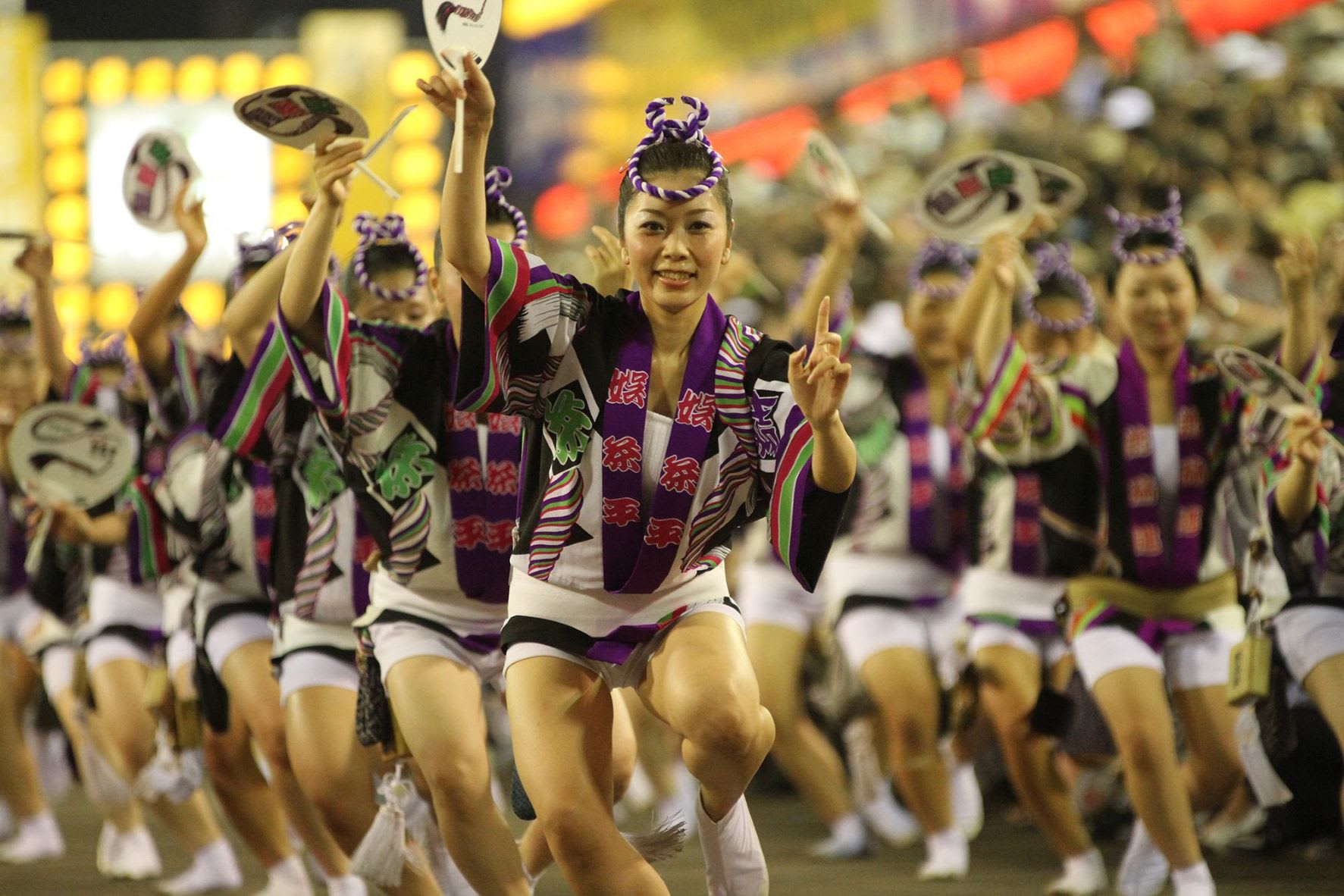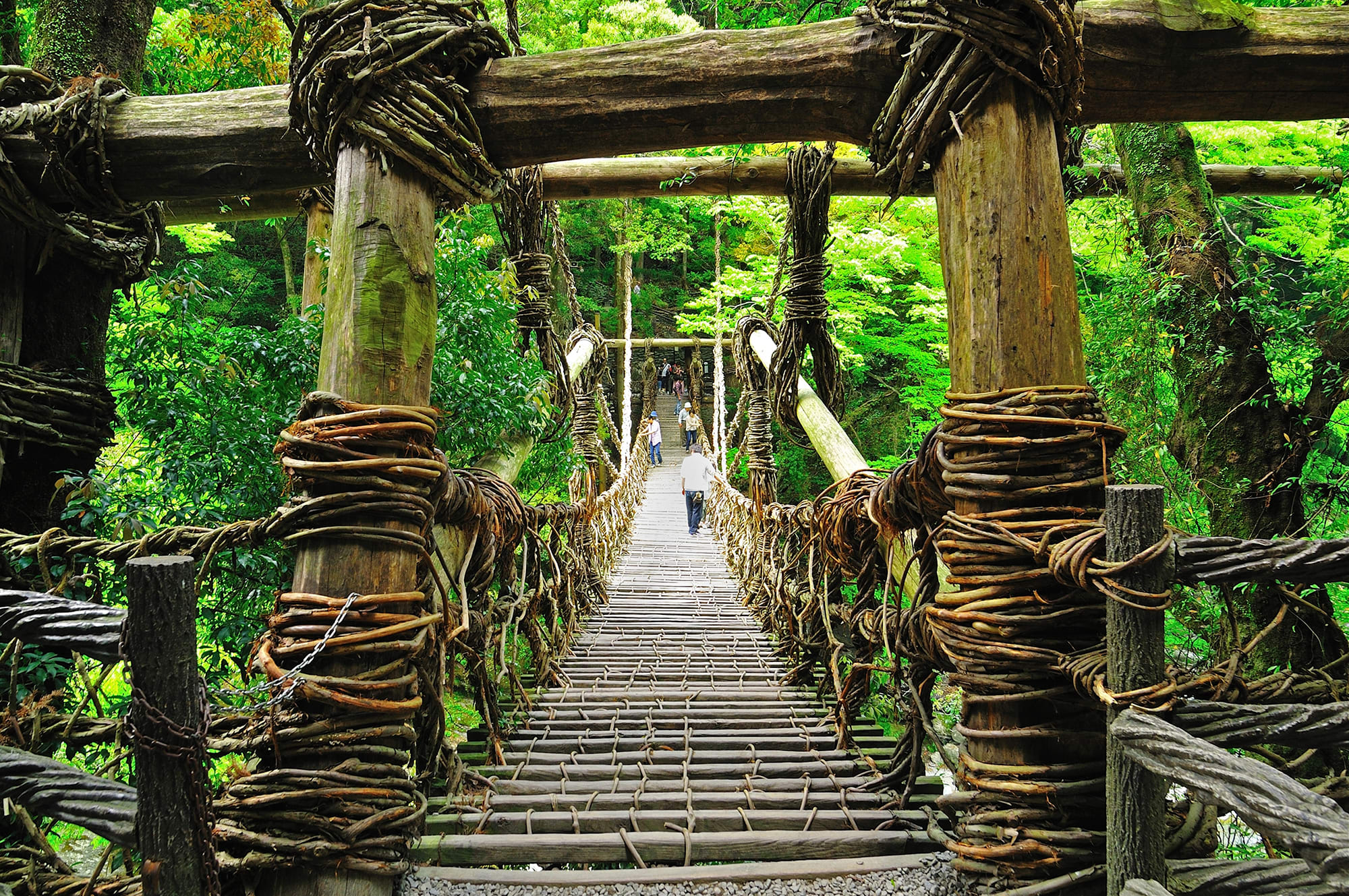CultureThings to do in All areas
Found 15 plans in All areas

-
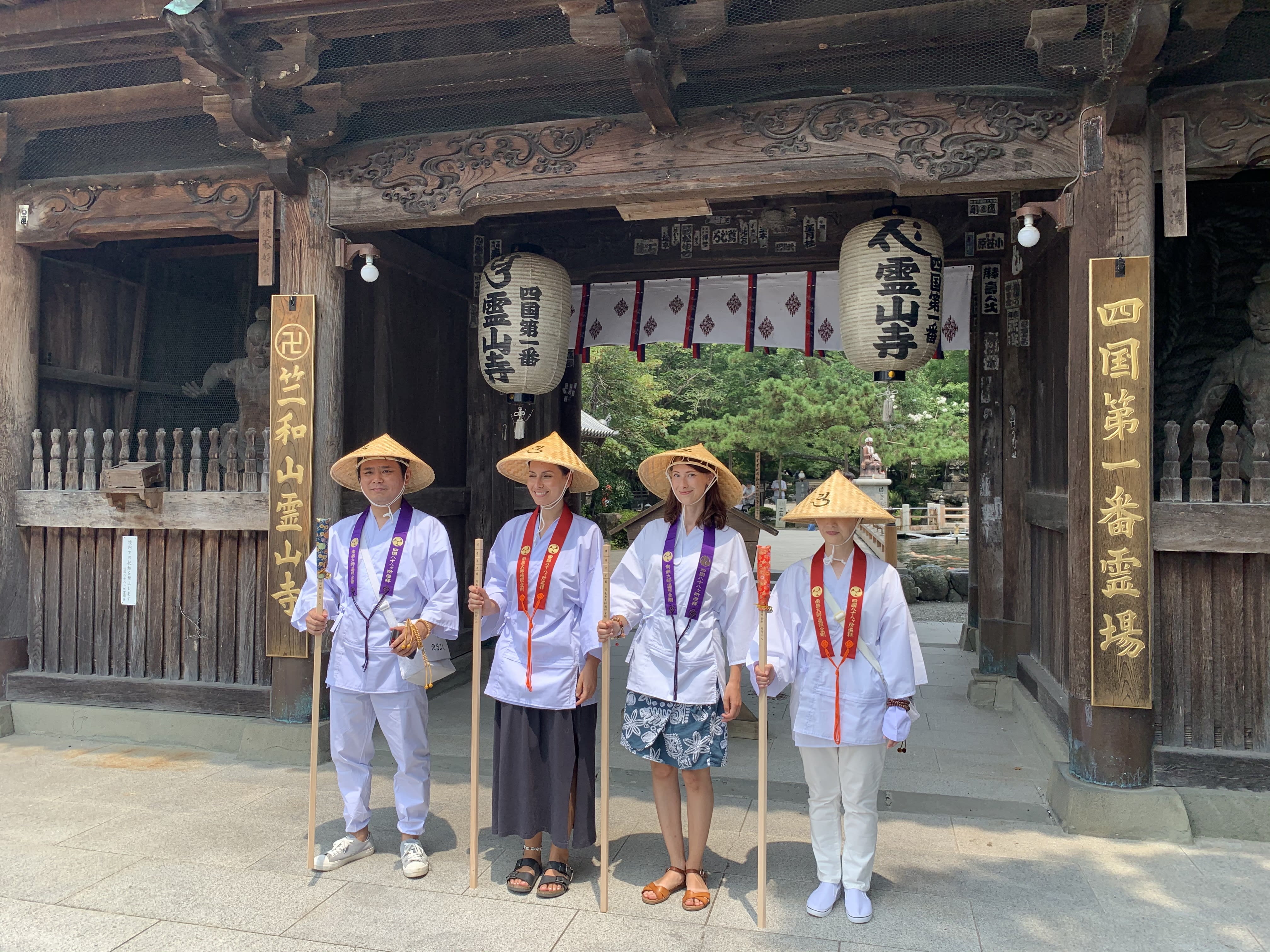
pilgrimage
88 temples of Shikoku
Visit Ryozenji Temple (Temple #1) in Pilgrim's Attire!
Why not commemorate your visit to the first temple of the 1,200-kilometer Shikoku pilgrimage by putting some of the attire used by those who make the entire journey. This arduous route is said to have been created by Kukai/Kobo Daishi (774-835), the founder of the Shingon sect of Buddhism, and consists of 88 official sacred sites and numerous other historical and religious places. Monzen-ichibangai is a store that is located in front of the main gate of Ryozenji, No. 1 of the 88 temples where many people start. For this program our experienced staff will first give you a brief lecture about the pilgrimage, then help you put on the attire. Our staff will also help to take photographs. ★☆Location★☆ Monzen Ichibangai (In front of Ryozenji Temple) 29-6 Bando Nishiyamada, Oasa-cho, Naruto City, Tokushima Prefecture 779-0236 ♢15 minutes by car from Naruto IC. ♢5 minutes by car from Itano IC.
Tokushima (City Center)・Naruto
Culture
5.0 (1 reviews)
JPY 1,650
-
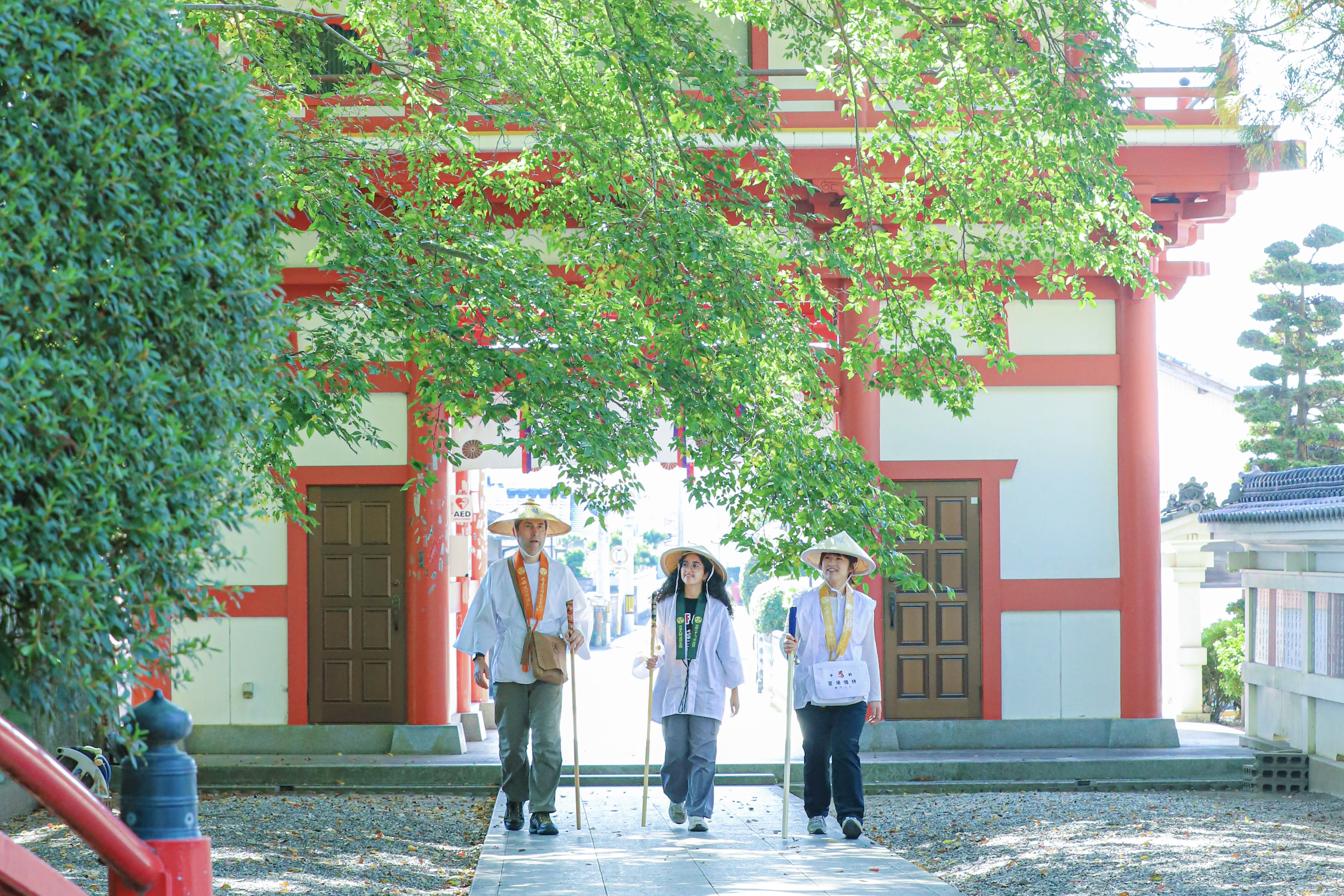
Pilgrimage
IndigoDyeing
- Awadance
Special Shikoku Pilgrimage and Indigo Dyeing Tour
This two-day tour contains a myriad of unique experiences, such as visiting a portion of the Shikoku 88 Temple Pilgrimage, staying at a temple and experiencing religious services, learning about Tokushima's indigo industry, and seeing Tokushima's famous Awa Odori dance. ◎On Day 1 you will walk a portion of the Shikoku Pilgrimage by foot. Together with a knowledgeable guide, you will walk from Temple No.1 Ryozenji to Temple No.4. Dainichiji. That evening you will stay at Temple No.6 Anrakuji, where there is a hot spring, and take part in the evening service. You will also have the rare opportunity to view beautiful Buddhist statues and paintings located in the small pagoda on the temple grounds. ◎On Day 2 you will experience indigo dyeing at an old merchant's house and enjoy a private performance of Tokushima's famous dance, Awa Odori, by one of Tokushima's most famous dance groups. 【Details】 Price Per Person: For 1 Participant: ¥225,000~ For 2 Participants: ¥200,000~ For 3 to 4 Participants: ¥125,000~ For 5 to 9 Participants: ¥100,000~ For 10 Participants or More: ¥75,000~ ・Meals: Breakfast (1), Lunch (2), Dinner (1) ・English Interpreter/Guide ・Pilgrimage Attire (Stole, Sedge Hat, White Cotton Jacket with Sleeves) ・A support bus (small or medium sized bus) is provided during the walking pilgrimage. It is possible to change to a jumbo taxi or sedan taxi. ・In case of a large number of guests, the night service experience at Anrakuji Temple cannot be held privately. ・Rooms at Anrakuji are typically Western-style rooms with a bath and toilet. Japanese-style rooms (bathroom and toilet outside of the room) are optional. ・The price does not include the overnight stay before the event. We can make arrangements for you upon request. Please feel free to contact us for details. 【Contact】 Air Travel Tokushima Inc. Tel:088-600-8560 E-mail:aitripper@air-travel.jp
Tokushima (City Center)・Naruto
Hands-on Crafts
Traditional Crafts
Culture
Japanese Food
Hiking/Walking
JPY 225,000
-
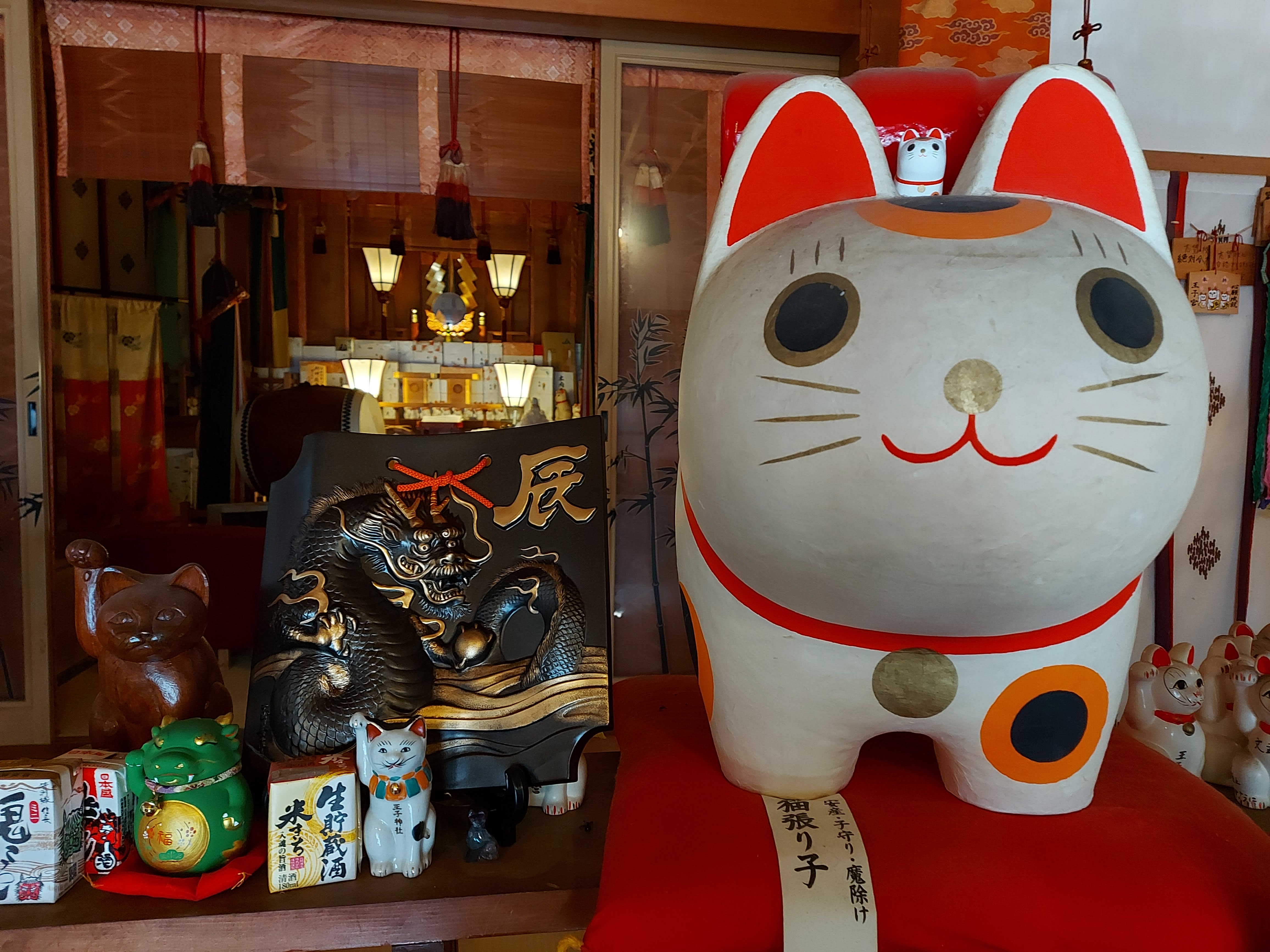
Whiskers and Whipped Cream: Cat & Parfait Tokushima Tour!
Through this tour you'll visit a cat shrine, cat-themed restaurant, and cat cafe all in one day! Enjoy cute maneki neko lucky cats, cat-themed foods, and of course some real felines! ※ Transportation is by taxi, and a guide will accompany you. 【Ouji Shrine】 The shrine is affectionately known as "Nekogami-san", or "Cat God" in Japanese. On the shrine grounds you will find plenty of maneki neko lucky cats, cat ema votive tablets, cat omamori charms, and plenty of real cats! They also offer monthly goshuin shrine stamps that, of course, feature adorable cats. 【Lunch: NekoYamaNeko】 You can choose from the set menu. 【Hogoneko Cafe KATBOS】 Enjoy playing, petting, and relaxing with some cats at this shelter cat cafe! Afterwards, you can enjoy a seasonal cat-themed parfait at the adjoined cafe. 【Tour Details】 Price (Per Person): 20,000 Yen Necessary Time: Approx. 4 Hr. 10 Min. Tour Dates: Tuesday, Thursday, Friday, Saturday Minimum Number of Participants: 3 Maximum Number of Participants: 4 (Please consult with us for groups of less than 3 or more than 4.) Age Restrictions: Those 5 & Older
Tokushima (City Center)・Naruto
Culture
Japanese Food
Sweets
JPY 20,000
-
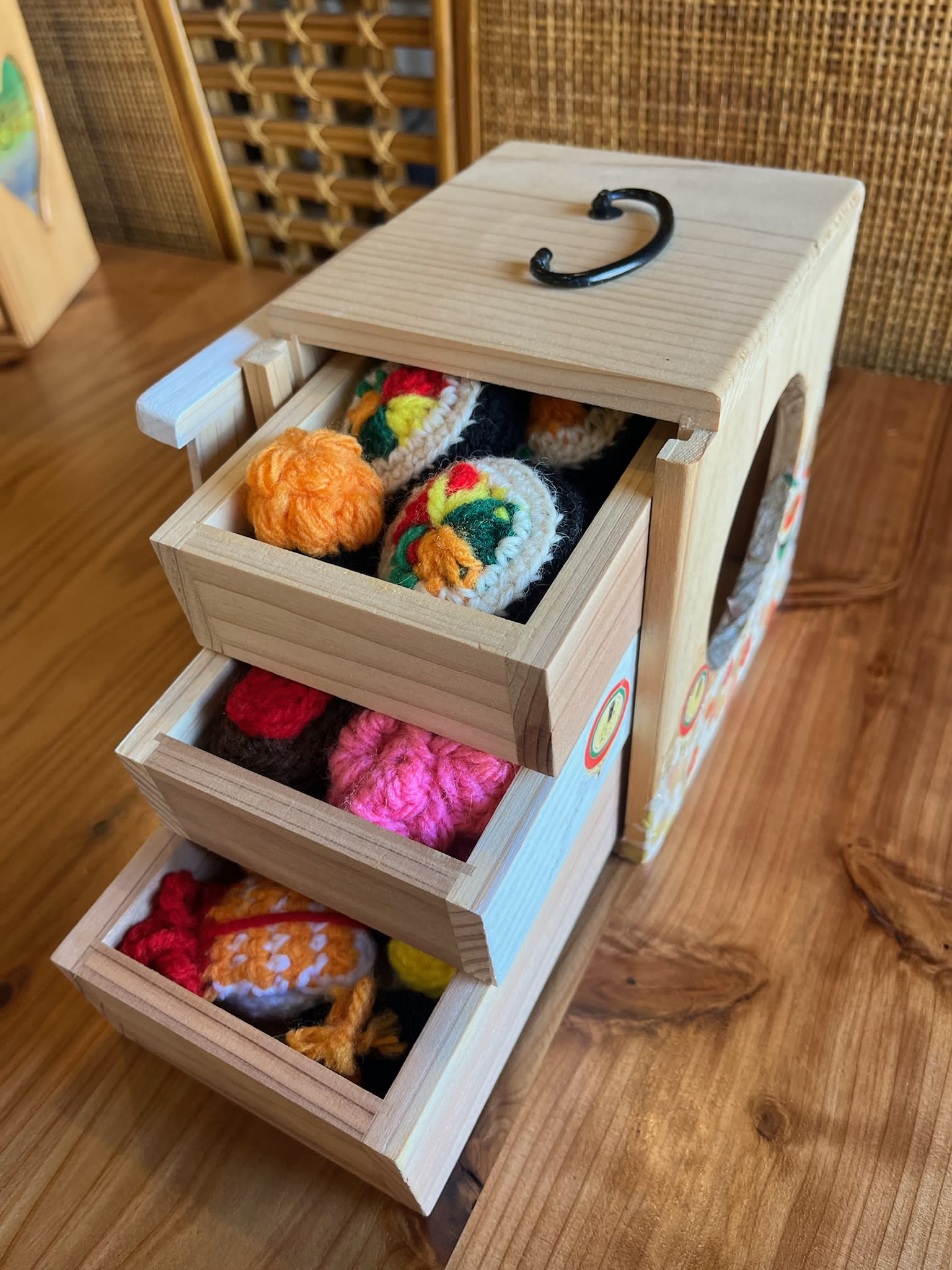
【Popotei】Wooden Yusanbako Lunchbox Making Activity!
【Popotei】 Popotei is a shop that has a variety of "faces". We offer food/drinks, karaoke, crafting lessons, make displays/exhibits for other companies/groups, and more. What ties everything together is the desire to see everyone smiling, not just our customers, but everyone involved in the process. We hope to add a bit of glamour and fun to everyone's daily lives. 【Plan Details】 Yusanbako are small, three-tiered lunch boxes that are unique culture element of Tokushima. In the past, children would bring their yusanbako to the mountains or sea during special events such as Hina Matsuri (Girl's Day). These wooden boxes are used as bento lunch boxes, but the exterior also has beautiful art and craftsmanship. Paint a yusanbako and make your own original piece! ◇Price 10,000 Yen 【Additional Options!】 Beer: 600 Yen Karaoke (1 Song): 100 Yen ※ Customers must be of legal age to purchase beer. (20 & Older) ※ Pair together with the yusanbako making activity! ◇Days/Times Days: Mondays, Tuesdays, Wednesdays, Fridays, Saturdays, Sundays Times: 10:00 - 22:00 Necessary Time: 1 Hour 30 Minutes ~ 2 Hours ◇Age/Group Number Restrictions Minimum Number of Participants: 2 Age Restrictions: Age 5 & Older 【Business Details 】 Popotei ◇Address Uchinakasu-12-7, Ejiri, Kitajima Town, Itano District, Tokushima Prefecture ◇Access By Car: Approx. 10 Minutes from Matsushige IC ◇Parking Available ◇TEL 10:00~:090-5712-1059 18:00~:088-698-7096 ◇Business Days/Hours & Closed Days Business Days: Mondays, Tuesdays, Wednesdays, Fridays, Saturdays, Sundays Business Hours: 10:00 - 22:00 Closed Days: Thursdays ◇SNS Instagram:https://www.instagram.com/poppotei.keiko/ ◇Website https://www.poppotei.com/
Tokushima (City Center)・Naruto
Hands-on Crafts
Traditional Crafts
Culture
JPY 10,000
-
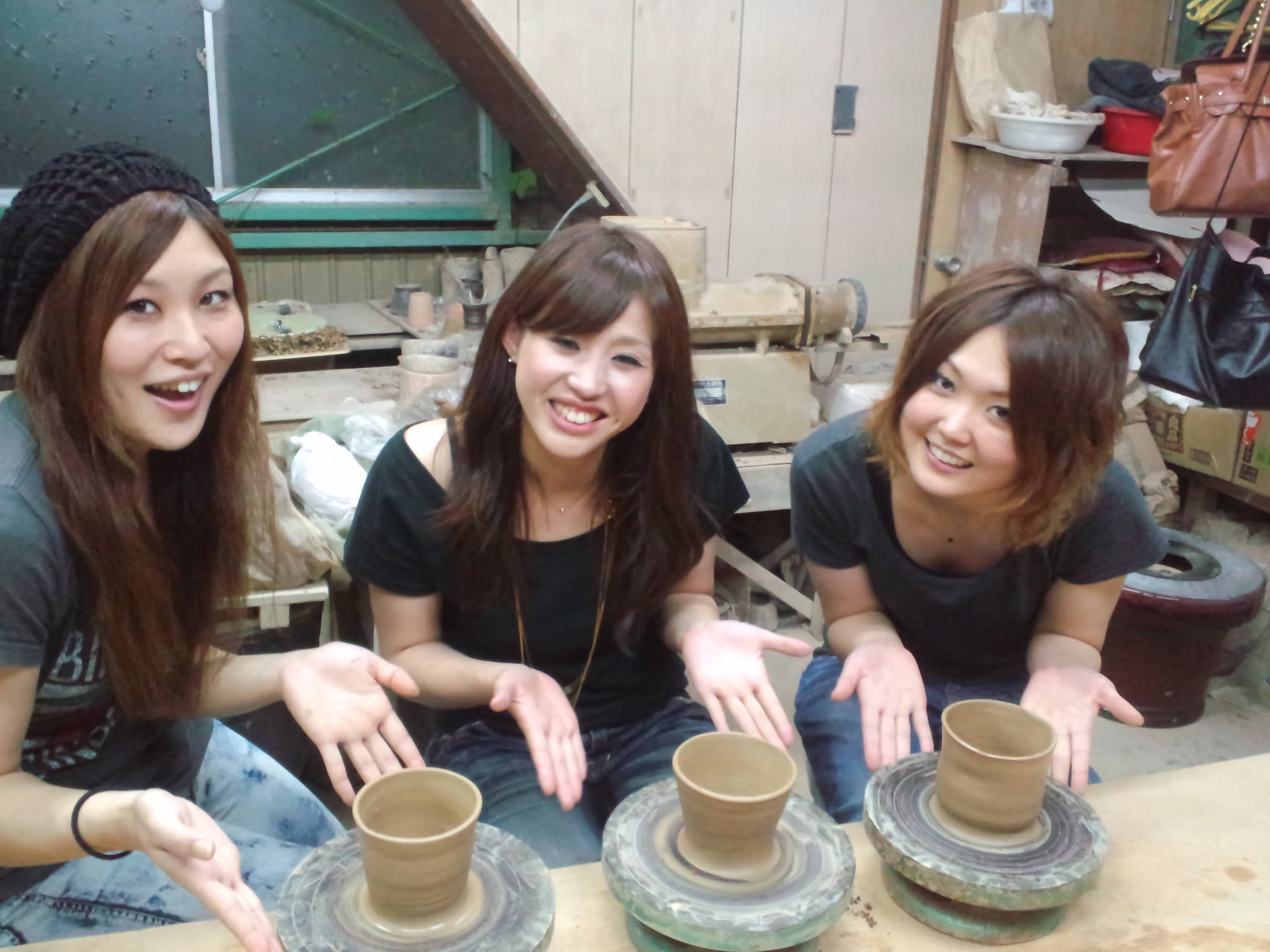
【Otaniyaki Togyo Kaikan (Umezatogama)】Otaniyaki Pottery Making!
【Otaniyaki Togyo Kaikan (Umezatogama)】 Try your hand at Otaniyaki Pottery, a traditional craft of Tokushima Prefecture! Company representative Yuuki Mori is a skilled craftsman who was the champion of the TV show "Pottery King Championship"! He strives to keep traditions alive while also pursing pieces with a modern sense that are user-friendly. Through these pottery making plans, the staff strive to support participant's so that they can make a piece they are proud of. 【Plan Details】 There are 2 types of activities to choose from. ・Pottery Sculpting ・Painting ★Pottery Sculpting★ Create your own original piece from scratch by the sculpting the clay. There are three types of sculpting methods depending on what you want to make: the ball shape, the string shape, and the board shape. ◇ Items You Can Make Plate, Large Sake Cup, Teacup, Chopstick Rest, Flower Vase, Tea Bowl, Decorative Ornament, Handprint Plate, etc. ※ We do not recommend extremely detailed work for beginners, but you may choose to make any kind of piece. ◇Price aiTripper Special Plan (Includes a Cute Chopstick Rest Gift!) Adult: 2,500 Yen Child: 1,950 Yen ※ The amount of clay uses for the child price is half that of the adult's. (This is more than enough for a child to participate in the activity.) ※ For those who want the same amount as the adult's price, please make your reservation requesting the adult's price. ◇Days/Times Times: 10:00 - 15:00 Necessary Time: Approx. 1 Hr. 30 Min. - 2 Hr. ◇Material Amount Estimate You will be given 1 kg of clay which can be used to make 1 item under this plan. ※ It is possible to make up to 2 sake cups and 5 chopstick rests, but for each item (within the 1 kg limit), an additional 1,100 Yen fee will be charged. ※The numbers are limited due to the work required prior to heating the clay, such as sculpting and glazing. We thank you for your understanding. ★Painting★ Using an already-made plate, you will draw a pattern with pencil and then trace over it with a water-repellent solution. This technique is called "kakinuki", where glaze isn't applied to the drawn lines. ◇Price Small Plate: 800 Yen ◇Age Restrictions This activity is suitable for all, regardless of age or gender. We do ask that children 6 and under are accompanied by their parent/guardian. (Please read all details in advance.) 《The Final Product》 The final product will take approximately 2 months to complete. Once it is finished you can come and pick it up (we will call), or we can send it to you (shipping and packaging fees are separate). 【Business Details 】 Otaniyaki Togyo Kaikan (Umezatogama) ◇Address Michinoue 30-1, Otani, Oasa-cho, Naruto City, Tokushima Prefecture ◇Access By Car: Follow Tokushima Prefectural Road 12, In Front of Oasa Branch of Tokushima Taisho Bank By Train: 8 Min. Walk from JR Awa Otani Station By Foot: 2 Min. Walk from Daishimae Bus Stop, Naruto Oasa Line, Tokushima Bus ◇Parking Available ◇TEL 088-689-0048 ◇Business Days/Hours & Closed Days Business Days: Everyday Business Hours: 9:00 - 17:00 ◇SNS Facebook: https://www.facebook.com/Yuuki.Mori.umezatogama/ Instagram:https://www.instagram.com/umezatogama/ ◇Website https://umezatogama.com/
Tokushima (City Center)・Naruto
Hands-on Crafts
Traditional Crafts
Culture
JPY 2,500
-
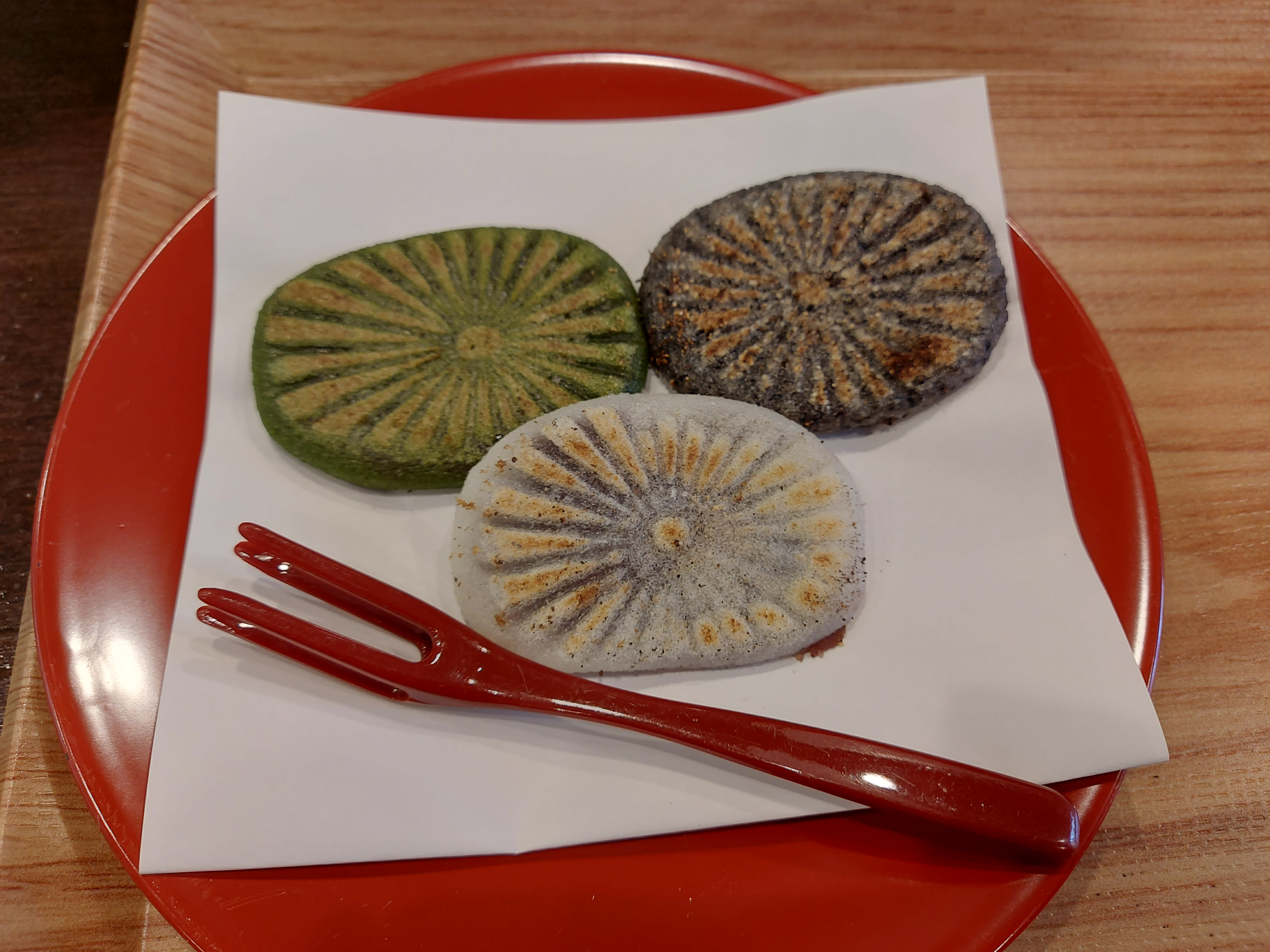
Explore Tokushima's Temple Town & Enjoy Traditional Sweets!【Guided Walking Tour】
Enjoy some of Tokushima's most representative sightseeing spots alongside some hidden gems in this walking tour. This half-day tour allows participants to experience Tokushima's shrines, traditional performing arts, an old town area, and historical sweets together with an English speaking guide. ♪ 【Bizan Tenjin Shrine】 After a short walk up a flight of stairs, one is greeted with brilliant red color that adorns the buildings of Tenjin Shrine. Dedicated to the God of Learning, Sugawara no Michizane, this shrine attracts many students hoping for some luck to pass their entrance exams. On the shrine grounds lies a cow statue known as the “Cow of Wisdom”. It’s said that the more you rub it, the more wisdom you will gain! In addition to being a shrine for learning, Tenjin Shrine is also known as a power spot for matchmaking! Near the western area of the shrine lies a large rock that is fondly known as “Himemiya-san” and it is said to be effective for match making, safe pregnancies, and for recovery from sickness. This shrine is also known for its beautiful goshuin shrine stamps that change monthly. Stamps featuring seasonal flowers, bamboo covered in snow, and more attract visitors from across the country eager to add to their goshuin collection. 【Awa Odori Kaikan: Shopping & Museum】 While waiting for the dance performance to start, peruse some uniquely Tokushima souvenirs at the shop “Aredeyo”. Aredeyo offers a wide array of souvenirs, such as local sweets and food products, indigo dyed scarves and shirts, traditional otaniyaki pottery, and more. Awa Odori Museum The museum on the 3rd floor teaches visitors about the history of the Awa Odori, with costumes, instruments, etc. on display. 【Awa Odori Dance Performance】 Enjoy watching a spectacular Awa Odori dance performance, a traditional performance art of Tokushima with over 400 years of history! The group will show visitors how the dance style has changed throughout the years, explain about the role of each instrument, and then finally give a mini lesson on the dancing basics. After this lesson, it’s time for the audience to join in on the fun! Don’t worry if you’re not good at dancing – as they say in Tokushima, “Those who dance are fools. Those who watch are fools. If both are fools, you may as well dance!” 【Tokushima Ramen Lunch】 Enjoy Tokushima's specialty "Tokushima Ramen" for lunch. 【Kinryosui Spring】 The beautifully clear waters of the Kinryosui Spring were once beloved by the lords of the Tokushima Domain in times past. Nowadays, residents of Tokushima still stop by to gather some of the delicious water. (Bring a water bottle and try some of the water for yourself!) 【Stroll Around Temple Town (Teramachi)】 Long ago, Hachisuka Iemasa, the domain leader, gathered various temples and shrines and brought them to this area, where they played an important role in the resident’s lives. Enjoy viewing the old shrines and temples that line the streets, and soak up the quiet and peaceful atmosphere. 【Wadanoya】 It’s said that long ago when the lord of the Tokushima domain completed the Tokushima Castle, a sweet called “Taki no Yaki Mochi” was served at the celebration. This sweet, made using the lord’s beloved Kinryosui Spring water, quickly became a hit. More than 400 years later, we can still enjoy the lord’s favorite treat at Wadanoya. In addition to Taki no Yaki Mochi, Wadanoya offers drinks made with Tokushima flavors, including Awa Bancha Tea, Sudachi citrus juice, yamamomo bayberry juice, and more. They also have seasonal items, such as shaved ice in the summer and zenzai (red bean soup with mochi) in the winter. The best part though? The view is absolutely gorgeous! This tiny café features a small waterfall with koi and seasonal flowers, and the traditional Japanese scenery makes it so easy to relax and enjoy some tea and sweets. 【Price per Person】 12,000 Yen 【Minimum Number of Participants】 2 【Meeting Place】 In Front of Tokushima Station 【Inquiries】 Air Travel Tokushima, Inc. TEL:088-600-8560 E-mail:aitripper@air-travel.jp
Tokushima (City Center)・Naruto
Culture
Japanese Food
Sweets
Hiking/Walking
JPY 12,000
-
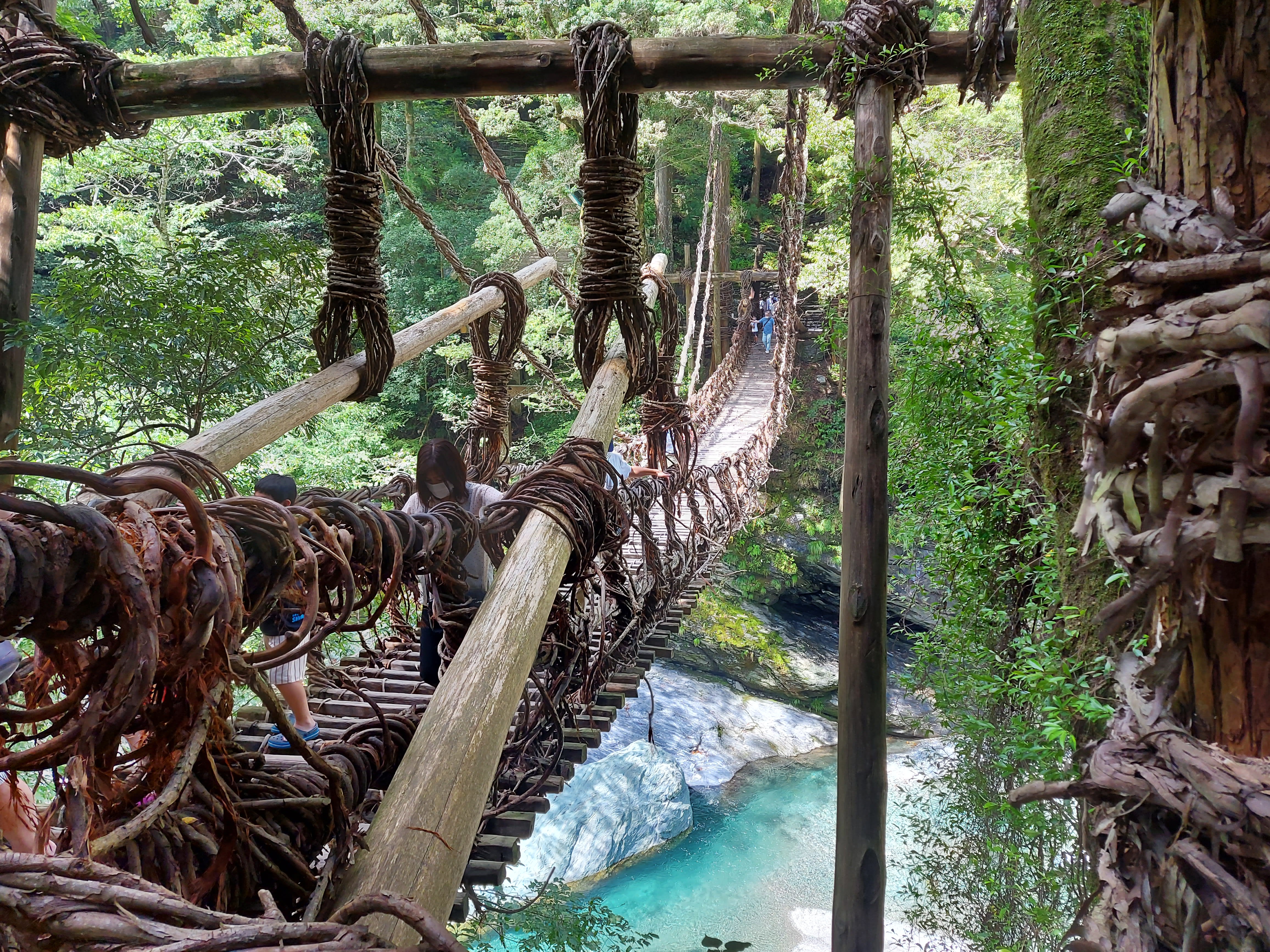
Explore the Mysterious Iya Valley!【Guided Tour】
Visit the representative sightseeing spots of the Iya Valley via taxi together with a guide! 【Iya Kazurabashi Vine Bridge】 This vine bridge shakes and sways with each step, and is not a spot to be skipped when visiting Iya Valley! Although crossing might be a bit frightening at first, the view of the valley from the bridge is truly stunning, and the view of the river below is sure to get your heart racing. 【Lunch: Iya Bijin】 Since long ago it has been difficult to grow rice in the Iya area, so soba (buckwheat) was grown in its place. As such, "Iya Soba" has become a staple food of the area. At Iya Bijin, you can try these delicious soba noodles for yourselves. 【Hi no Ji Bend】 The Iya Valley offers grand nature that no big city can. The Hi no Ji Bend, named for its likeness to the Japanese character Hi (ひ), changes its face with each passing season. In spring it's a vivid green, in autumn it's dyed with seasonal colors, and in winter it becomes a white landscape. No matter when you visit, the sights are beautiful! 【Peeing Boy Statue】 According to the old folk tales, children used to prove their courage by standing on top of this rock and peeing over the edge of the gorge. Standing 200 m above the river's surface, some people find their feet frozen on this rock! Like the Hi no Ji Bend, the scenery changes with the seasons, and although a bit frightening perhaps, the views are gorgeous. 【Oboke Gorge Sightseeing Cruise + Souvenir Shopping】 Enjoy the emerald green waters and towering rocks of the Oboke Gorge from this sightseeing boat. After riding on the boat, you can enjoy perusing all of the local Iya souvenirs at the connected gift shop. 【Price per Person】 For Groups of 2 - 3: 23,000 Yen For Groups of 1: 38,000 Yen 【Minimum Number of Participants】 1 【Maximum Number of Participants】 3 【Required Time】 Approx. 4 Hours 15 Min. 【Meeting Place】 Oboke Station (For those coming from Tokushima Station, there is a train that departs at 9:00 AM (Arrives at 10:37 AM).)
Iya・Oboke・Ikeda
Culture
Japanese Food
JPY 23,000
-
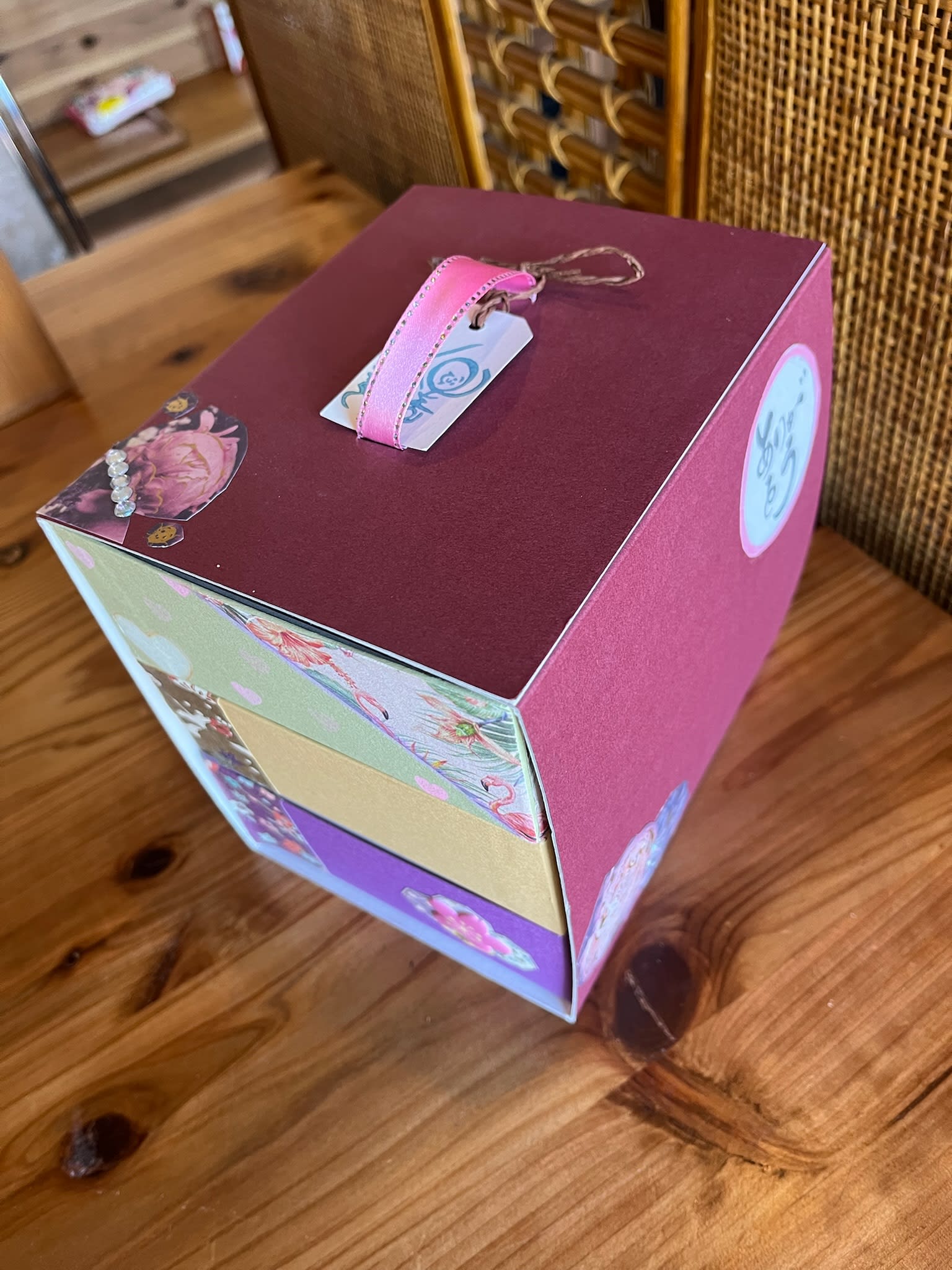
【Popotei】Paper Yusanbako Lunchbox Making Activity!
【Popotei】 Popotei is a shop that has a variety of "faces". We offer food/drinks, karaoke, crafting lessons, make displays/exhibits for other companies/groups, and more. What ties everything together is the desire to see everyone smiling, not just our customers, but everyone involved in the process. We hope to add a bit of glamour and fun to everyone's daily lives. 【Plan Details】 Yusanbako are small, three-tiered lunch boxes that are unique culture element of Tokushima. In the past, children would bring their yusanbako to the mountains or sea during special events such as Hina Matsuri (Girl's Day). These wooden boxes are used as bento lunch boxes, but the exterior also has beautiful art and craftsmanship. Paint a paper yusanbako and make your own original piece! ◇Price 2,500 Yen 【Additional Options!】 Beer: 600 Yen Karaoke (1 Song): 100 Yen ※ Customers must be of legal age to purchase beer. (20 & Older) ※ Pair together with the yusanbako making activity! ◇Days/Times Days: Mondays, Tuesdays, Wednesdays, Fridays, Saturdays, Sundays Times: 10:00 - 22:00 Necessary Time: 1 Hour 30 Minutes ~ 2 Hours ◇Age/Group Number Restrictions Minimum Number of Participants: 2 Age Restrictions: Age 5 & Older 【Business Details 】 Popotei ◇Address Uchinakasu-12-7, Ejiri, Kitajima Town, Itano District, Tokushima Prefecture ◇Access By Car: Approx. 10 Minutes from Matsushige IC ◇Parking Available ◇TEL 10:00~:090-5712-1059 18:00~:088-698-7096 ◇Business Days/Hours & Closed Days Business Days: Mondays, Tuesdays, Wednesdays, Fridays, Saturdays, Sundays Business Hours: 10:00 - 22:00 Closed Days: Thursdays ◇SNS Instagram:https://www.instagram.com/poppotei.keiko/ ◇Website https://www.poppotei.com/
Tokushima (City Center)・Naruto
Hands-on Crafts
Traditional Crafts
Culture
JPY 2,500
-

Explore the Unique Shrines & Temples of South Tokushima! 【Guided Tour】
Explore the unique shrines and temples that southern Tokushima has to offer alongside a guide! 【Tairyuji Temple】 Take western Japan's longest cable car up to the mountain, enjoying the beautiful view of nature along the way. Once you reach the top, explore the mountain temple of Tairyuji. Its many historical buildings, ceiling painting of a dragon, and surrounding grand nature are amazing! 【Omatsu Daigongen Shrine】 This shrine is affectionately known as "nekogami-san" (lit. "cat god") in Japanese. It is home to over 10,000 beckoning cat statues, a myriad of other cute cat statues, shrine guardian cats, and even some real felines. There is also an interesting legend about a monster cat attached to this shrine... 【Jizoji Temple】 On the shrine grounds is a local water beloved by the locals. Anyone is free to enjoy this incredibly high-quality water! 【Kincho Shrine】 This shrine is full of tanuki (racoon dogs)! Having appeared in the Ghibli film "Pom Poko", it has attracted many fans from across the country. Price (Per Person) 30,000 Yen Minimum Number of Participants 3
Anan・Naka・Kito
Culture
JPY 30,000
-

KAMIKATSU
Sustainable
- ZERO WASTE TOWN
- SDGS
【Kamikatsu】Traditional Tea Tasting Comparison with Ms. Shinobu
~To Those Considering a Trip to Kamikatsu ~ Kamikatsu is a small town with a population of less than 1,500. In 2003, it became the first municipality in Japan to make a "Zero Waste Declaration", aiming to become a garbage-free town. For responsible travelers who want to experience Kamikatsu as it really is and learn and enjoy through travel, we offer a variety of programs. ~Story~ Kamikatsu Awa Bancha is a lactic acid fermented tea that is rare in the world. This golden tea, with its unique aroma and refreshing sourness, has been handed down from generation to generation in Kamikatsu for private use. The production process is unique, and almost all of the steps, from picking the tea to bagging it, are done by hand. The flavor and taste varies from year to year, and from one tea maker to another, resulting in a thousand different types of tea. This valuable tea-making method has been designated as a national Important Intangible Folk Cultural Asset. Faced with a lack of successors, Ms. Shinobu and others involved in the production are working to preserve and popularize the Kamikatsu Awa Bancha tea in an effort to pass this tradition on to future generations. Fitness Level ★☆☆☆☆ Skill Level ★☆☆☆☆ ~Customer Feedback~ ・It was a great experience as we learned of a tea type with which we were not particularly familiar with. ・The presenter was also great, and the stories of the locals who are producing the tea were also interesting. ~Prices~ Per Person: For Groups of 1: 20,000 Yen For Groups of 2: 12,500 Yen For Groups of 3 - 4: 10,000 Yen For Groups of 5 - 10: 7,500 Yen Price includes a 500 yen investment in Kamikatsu. ~Target Age~ This experience is designed for adults, but young children are welcome to accompany you. ~Access~ At a location of your choice in the Kamikatsu area (prior arrangement required) ※A separate fee for the use of the venue is required. ~About Kamikatsu~ 1. Meals ・The number of eateries is limited, so advance booking is necessary. ・There are no convenience stores or supermarkets in the town. 2. Transportation ・If you apply only for the experience, you will have to arrange transportation to the site by yourself. ・From Tokushima Station: Approx.1 hour by car, 1.5 hours by bus ・As the number of buses operating is limited, other transportation options such as volunteer taxis are recommended. (Requires registration and booking in advance.) 3. Responsibilities as Travelers ・When visiting Kamikatsu, please double check your travel gear and, as a zero waste traveler, take the actions required to not leave garbage behind. ・Prepare to bring reusable water bottles, chopsticks, etc. ・When having meals, consider the amount you will eat as to minimize leftover food as much as possible.
Kamikatsu・Kamiyama・Awa・Yoshinoga
Culture
Eco-tours
JPY 20,000
-
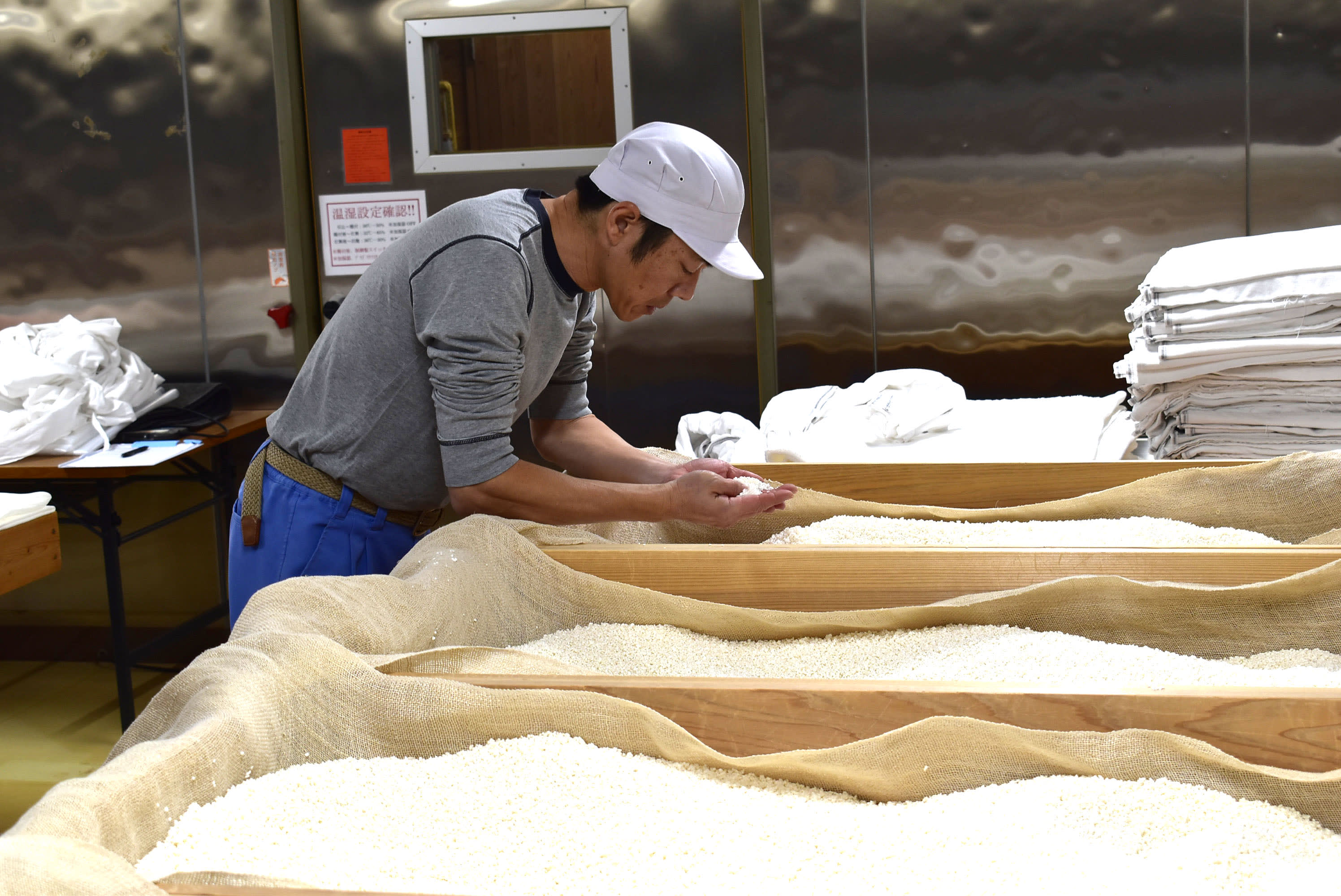
【Taiko Sake Brewery】 Brewery Tour + Optional Sake Tasting Plan
【Taiko Sake Brewery - Nisshin Shurui】 Nisshin Shurui Taiko Sake Brewery produces and sells many types of alcoholic beverages, including sake, authentic shochu, liqueurs, spirits, fruit wines, and whiskey. Traditional Japanese sake brewing was designated as a UNESCO Intangible Cultural Heritage in 2024. The Taiko Sake Brewery has been producing Japanese sake since 1857 at the end of the Edo period (1603 - 1868). We later began producing authentic shochu, and recently have started making whisky. Our brewery is located in Donari-cho of Awa City, on the northern bank of the Yoshinogawa River's central reach. Blessed with a mild climate and abundant nature, our brewery uses the first-class water from the Yoshinogawa River in our sake production. 【Plan Details】 ★Brewery Tour★ One of our brewers will give you a tour of our factory, explaining the sake making process and what makes our products special. You'll be able to see the facilities used in sake making, and learn more about them. After the factory tour, you can enjoy an optional (additional fee required) tasting of some of our finest sake, as well as purchase any sake that have caught your interest. ※ We can also take commemorative photos for you in the factory, as well as lend you the brewer's happi to wear free of charge. ★Tasting (Additional Fee)★ Advance Reservation ※ Same-day Applications also Accepted Enjoy 5 top-class types of sake, such as Daiginjo and Junmai Daiginjo, that are representative of our brewery. While tasting these sake, you can also enjoy chatting with our brewer about sake and sake making. ★Shopping★ Sake served at the sake tasting, seasonal sake, and original brewery goods are available for purchase. ★Special Present!★ Those who apply through the aiTripper website will receive special brewery goods and Japanese sake as a present! ◇Price (Per Person) Sake Brewery Tour: 2,000 Yen Optional Sake Tasting: 1,000 Yen ※Same-day Applications Possible, Age Verification Required ◇Days/Times Sake Brewing Period: Early October - Late April ※ Tours outside of the sake brewing period are possible, but there may be some restrictions due to maintenance, etc. Days: Weekdays (Monday - Friday) Times: 14:00 ~ Necessary Time: Approximately 1 Hour ◇Age/Group Number Restrictions Minimum Number of Participants: 2 Maximum Number of Participants: 8 ※ Please speak with us for groups of more than 8. Age Restrictions: The Tasting Plan is only available for those age 20 and older. ◇Points of Caution ・There may be times when we are unable to accommodate your request, especially depending on the season. 【Business Details 】 Nisshin Shurui Taiko Sake Brewery ◇Address ・【Taiko Sake Factory】: Donari-chokori 176, Awa City, Tokushima Prefecture ・【Main Office】: Kamirokujo 283, Kamiita Town, Itano District, Tokushima Prefecture ◇Parking Available ◇TEL/Inquiries 【Main Office】:088-694-8166 【Taiko Sake Factory】088-695-3238 ◇Business Days/Hours & Closed Days Business Days: Mondays, Tuesdays, Wednesdays, Thursdays, Fridays Business Hours: 9:00 - 17:00 Closed: Saturdays, Sundays ◇SNS Facebook: https://www.facebook.com/sudachichu/?ref=embed_page# Instagram: https://www.instagram.com/nissinshurui ◇Website https://www.nissin-shurui.co.jp/en-US/
Kamikatsu・Kamiyama・Awa・Yoshinoga
Culture
JPY 2,000
-
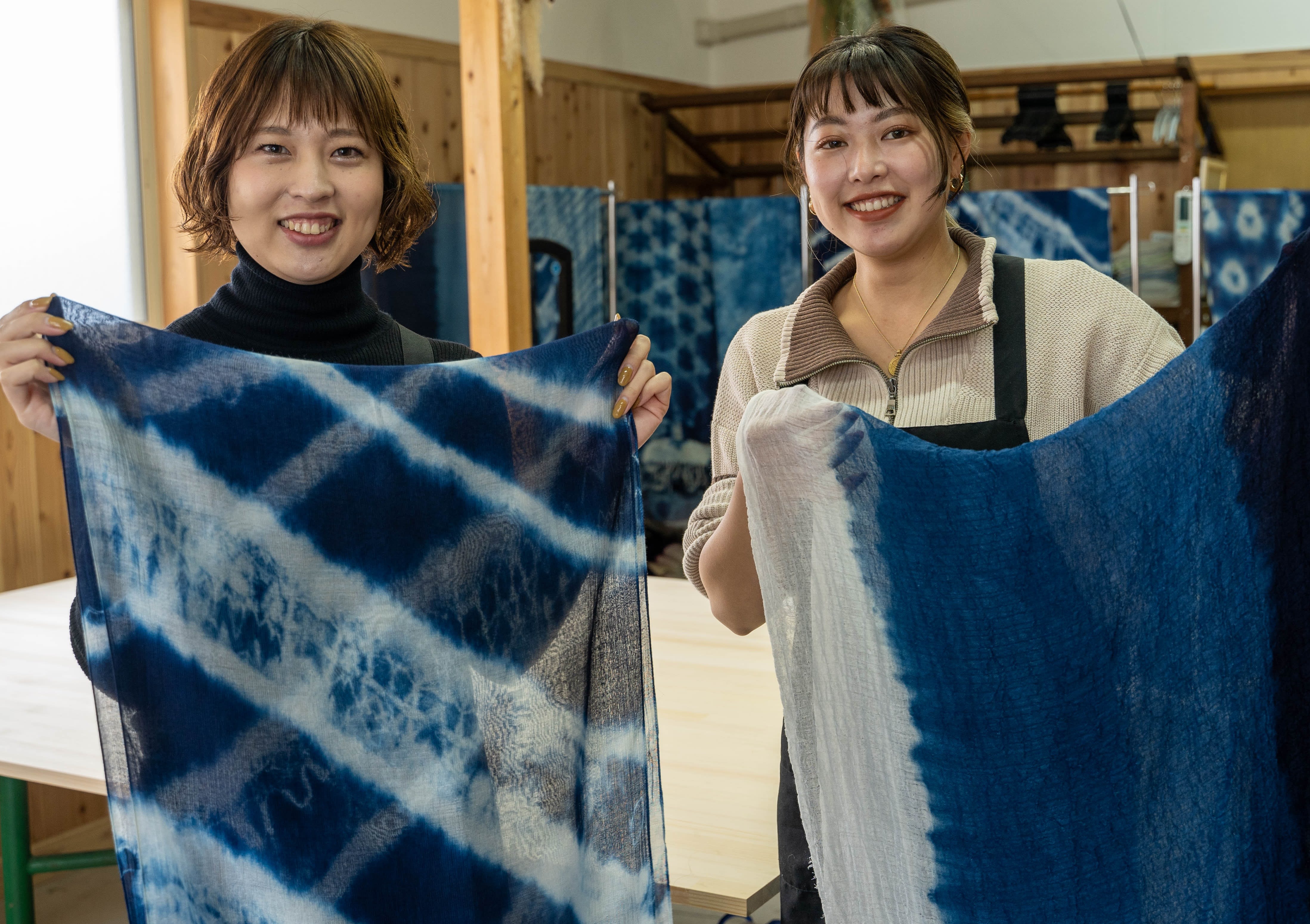
【Awa Indigo Yamauchi Udatsu Workshop】 Aizome Indigo Dyeing
【Awa Indigo Yamauchi Udatsu Workshop】 The town of Wakimachi flourished as a trading center for indigo since the Edo period (1603 - 1868). It is often referred to as the "Udatsu no Machinami" (Udatsu Townscape), due to the udatsu style roofs, which are high-winged walls built to prevent the spread of fire from one house to another. This indigo studio is nestled in the streets of the Udatsu Townscape, allowing visitors to freely enjoy Tokushima's culture. The indigo is produced in house, and the dye used for the activity is made with a natural lye fermentation method. Come stop by and make your own original indigo dyed item, a great way to remember your trip! 【Plan Details】 After listening to a description about Awa Indigo and Aizome Indigo Dyeing, participants will choose their fabric and design, dye the item, wash it, and then take it home to dry in a plastic bag. The staff will be there to help for the entire activity, so there is no need to worry. ◇Price Small Handkerchief (100% Cotton or Towel Fabric): 1,100 Yen Handkerchief (Towel Fabric, About the Same Size as a Face Towel: 1,650 Yen Scarf: 4,400 Yen Eco-bag: 4,400 Yen Drawstring Bag: 1,650 Yen Socks: 2,200 Yen ◇Days/Times Days: Monday, Wednesday, Thursday, Friday, Saturday, Sunday Times: 10:00 - 14:30 Necessary Time: Approx. 1 Hour ◇Group Number Restrictions Minimum Number of Participants: 1 Maximum Number of Participants: 10 【Business Details】 Awa Indigo Yamauchi Udatsu Workshop ◇Address Totsukinuki-cho 45-1, Wakimachi, Oasa, Wakimachi, Mima City ◇Access By Car: Approx. 7 Minutes from Wakimachi IC By Train/Taxi: Approx. 9 Minutes by Taxi from JR Anabuki Station ◇Parking Please park at the Michi no Eki Ai Land Udatsu. ◇TEL 0883-52-5168 ◇Business Days/Hours & Closed Days Business Days: Mondays, Wednesdays, Thursdays, Fridays, Saturdays, Sundays Business Hours: 10:00 - 16:00 Closed Days: Tuesdays, Year End Holiday ◇Website http://aizomeya.jp/
Mima・Wakimachi・Mt. Tsurugi
Hands-on Crafts
Traditional Crafts
Culture
JPY 1,100
-

【Jomanji Temple】Zazen Meditation - Come to Know Your True Self
【Jomanji Temple】 Located amongst abundant nature, Jomanji Temple of Kaiyo Town, Tokushima Prefecture is the oldest Zen temple on the island of Shikoku. Here you will discover not your body or heart, but your true self. 【Plan Details】 We teach Zazen to those who are beginners as well as children. It is also possible to do Zazen while sitting on a chair, so anyone can participate with peace of mind. Enjoy a pleasant stay with us as you take the time to harmonize your body and mind. ◇Price Adult (13 Years of Age & Older): 3,500 Yen Child (6 - 12 Years of Age): 2,500 Yen Child (4 - 5 Years of Age): 1,000 Yen ◇Days/Times Necessary Time: 2 Hours ◇Location Information Jomanji Temple Nishizawa 51, Yoshida, Kaiyo Town, Kaifu District, Tokushima Prefecture 【Business Details 】 General Incorporated Association KANNON ◇Address Nishizawa 51, Yoshida, Kaiyo Town, Kaifu District, Tokushima Prefecture ◇Access By Car: Approx. 2 Hr. From Tokushima Station By Train/Taxi: 10 Min. Taxi Ride From Awa Kainan Station By Bus/Foot: 10 Min. Walk From Obi Bus Stop ◇Parking Available ◇SNS Instagram:https://www.instagram.com/zen1291.kaifu?igsh=MW1qa2tycm5oeXFwZw%3D%3D&utm_source=qr
Minami・Mugi・Shishikui
Culture
JPY 3,500
-

【Kamikatsu Half-day Tour】 Zero Waste Center, Tea Tasting, Etc.
Experience and learn about the town of Kamikatsu through this educational tour. Talk with the local people, and learn first-hand what their day-to-day life is really like. 【About Kamikatsu】 Kamikatsu is a small town on the island of Shikoku, having a population of roughly 1,300. It is situated in the mountainous area of the southeast Shikoku Island with over 80% of its area covered by mountains and forests. In 2003, the town of Kamikatsu became the first municipality in Japan to declare for Zero Waste with the aim to reduce incineration and landfill waste to zero. 【About the Tour】 【Rise & Win Brewery】 This brewery produces craft beer that generates zero waste. Through this tour, learn about the process of how beer is produced in Kamikatsu and the company's philosophy. Talk to the staff and learn about the real life of Kamikatsu's residents. *Includes 1 Drink (Juice for Children) 【Zero Waste Center】 Participate in a workshop about waste at the Zero Waste Center, which is a regular stop for the town's residents. Afterwards, the guide will show you around the center. 【Tea Tasting & Snacks】 Kamikatsu Awa Bancha Tea is a type of tea made with a rare lactic acid fermentation method. This yellow tea has a unique fragrance and refreshing sourness, and has been made and passed down by Kamikatsu households for generations. Meet with a local producer of Awa Bancha and try a myriad of different Awa Bancha teas, as well as some locally made sweets. 【Minimum Number of Participants】 3 People 【Maximum Number of Participants】 6 People 【Price per Person】 Adults: 15,000 Yen Children (12 & Under): 12,000 Yen 【Points of Caution】 * A volunteer taxi will be used for this tour. Pick-up/drop-off is possible for locations within Kamikatsu. *Lunch is not included in this tour. As an option, we can reserve a seat for you at a restaurant prior to the tour starting. *The contents/order of this tour may change depending on the season and other circumstances. Thank you for your understanding. Photo Credit: INOW Kamikatsu
Tokushima (City Center)・Naruto
Culture
Eco-tours
JPY 15,000
-
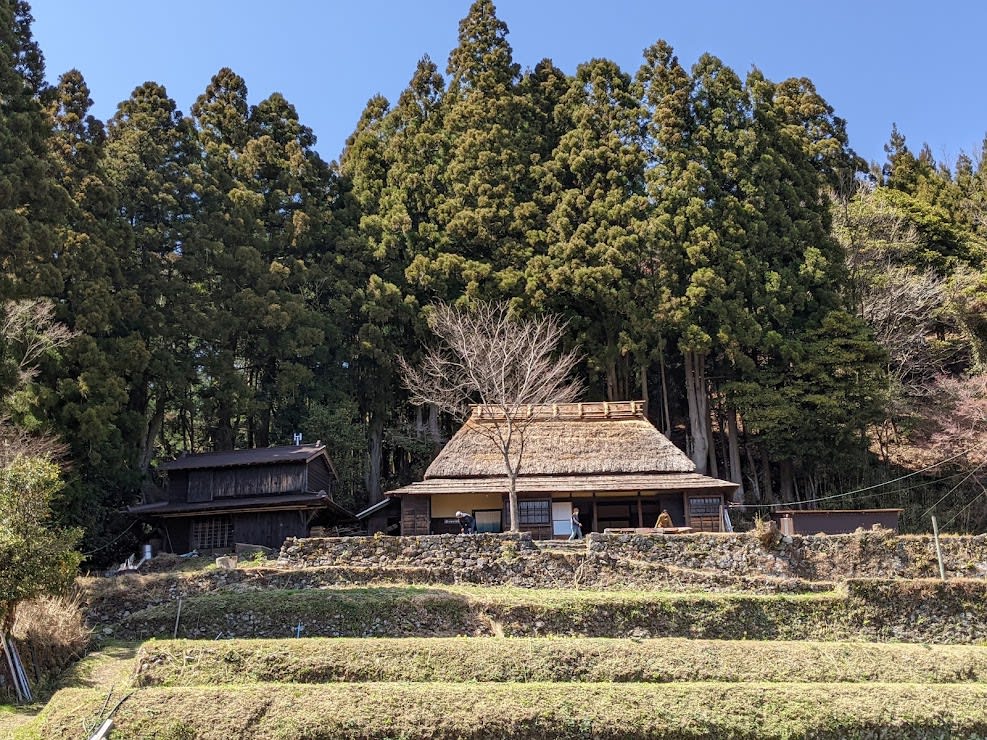
KAMIKATSU
Sustainable
- ZERO WASTE TOWN
- SDGS
【Kamikatsu】Experience Traditional Village Life at Yaeji Hananotei
~To Those Considering a Trip to Kamikatsu ~ Kamikatsu is a small town with a population of less than 1,500. In 2003, it became the first municipality in Japan to make a "Zero Waste Declaration", aiming to become a garbage-free town. For responsible travelers who want to experience Kamikatsu as it really is and learn and enjoy through travel, we offer a variety of programs. ~STORY~ Deep within Kamikatsu lies the Yaeji Village, a place where the original scenery of Japan still remains. Beautiful terraced rice fields can be found among the mountains, with the sounds of running water beside the fields being heard. As night descends upon the village, smoke from the resident’s wood-fire baths can be seen rising into the air, giving a true feeling of how little the people’s way of life has changed. Overlooking the terraced rice fields from high above is the thatched-roof Hananotei. An important old folk house (kominkan), it has been restored using local materials and techniques that have been passed down through the ages. Gather around the sunken hearth together with those who are working to preserve the village and enjoy chatting, brewing coffee with a stone mortar, and grilling mochi... We also recommended you simply do nothing but sit and enjoy the view of the terraced rice fields. Come and visit Yaeji Village and enjoy a peaceful and heartwarming time. Fitness Level ★☆☆☆☆ Skill Level ★☆☆☆☆ ~Customer Feedback~ ・Surrounded by a beautiful view, I was able to relax and enjoy the atmosphere and slow lifestyle of the Japanese countryside from a thatched roof house. ・Although access was not so easy, magnificent scenery and special experiences were waiting for us! ~Prices~ Per Person: For Groups of 1: 24,000 Yen For Groups of 2: 13,000 Yen For Groups of 3 - 4: 9,500 Yen For Groups of 5 - 6: 6,500 Yen * Price includes a 500 yen investment in Kamikatsu. ~About Kamikatsu~ 1. Meals ・The number of eateries is limited, so advance booking is necessary. ・There are no convenience stores or supermarkets in the town. 2. Transportation ・If you apply only for the experience, you will have to arrange transportation to the site by yourself. ・From Tokushima Station: Approx.1 hour by car, 1.5 hours by bus ・As the number of buses operating is limited, other transportation options such as volunteer taxis are recommended. (Requires registration and booking in advance.) 3. Responsibilities as Travelers ・When visiting Kamikatsu, please double check your travel gear and, as a zero waste traveler, take the actions required to not leave garbage behind. ・Prepare to bring reusable water bottles, chopsticks, etc. ・When having meals, consider the amount you will eat as to minimize leftover food as much as possible.
Kamikatsu・Kamiyama・Awa・Yoshinoga
Culture
Eco-tours
JPY 24,000
Recommended Tourist Information
-
Awa Dance Festival (Awa Odori)
Awa Odori (Awa Dance) is a world-class traditional performing art with a history of over 400 years. In Tokushima City, the eve of the festival is held on August 11 every year. Then, from the 12th to the 15th, a wild dance is performed at stages and other locations throughout the city. Awa Odori is one of the most popular festivals in Japan, attracting many tourists from not only within Japan, but also from abroad. The synchronized dancing to the sounds of shamisen, gongs, drums, and other musical instruments is truly breathtaking.
-
Iya Vine Bridges
In the secluded area of the Iya Valley lies a vine bridge made from hardy kiwi, which is 45 meters long and 2 meters wide and is 14 meters above the water. The beautiful shape of the bridge is reflected in the clear water of the Iya River that lies below, creating a scene that is in harmony with nature and shows different colors throughout the four seasons. Designated as a National Important Tangible Folk Cultural Property, it is now a popular sightseeing area.
-
Yakuoji Temple
This is the last temple in Tokushima Prefecture that is a part of the Shikoku 88 Temple Pilgrimage route, and it is famous as a temple to ward off bad luck or misfortune. There are three sets of stairs - one with 33 stairs, one with 42 stairs, and one with 61 stairs. These are the years of misfortune for women, men, and those who turn 60 (61 in the old calendar) respectively . By climbing and leaving a coin on each step, it's said that one can prevent misfortune from occurring during that year.
-
Surfing in Tokushima!
Tokushima has many surfing spots, such as Naruto City, the northern part of Tokushima City, and the southern part from Anan City to Kaiyo Town - all of which can be enjoyed by both beginners and advanced surfers. Tokushima Prefecture has produced many professional surfers and is sometimes called "Awa no Kuni, the surfing capital of Japan" (Awa is the former name of Tokushima, and "Kuni" means country). In particular, the southern part of Tokushima Prefecture and the eastern part of Kochi Prefecture are the best surfing areas in Shikoku.


 0
0 